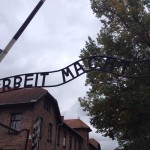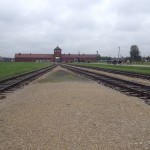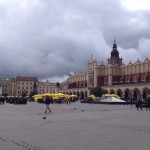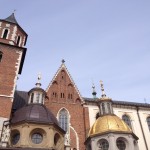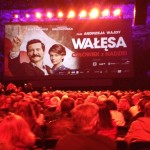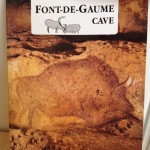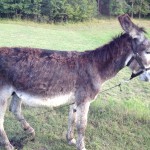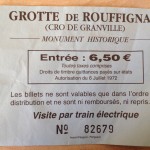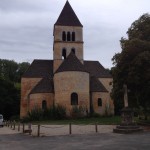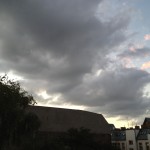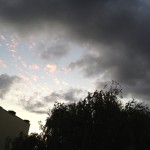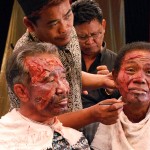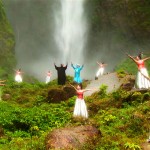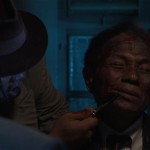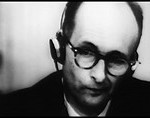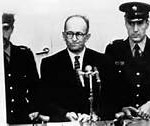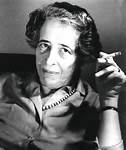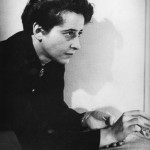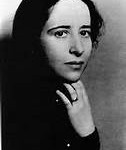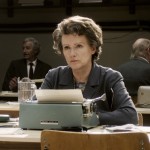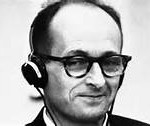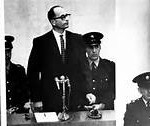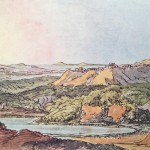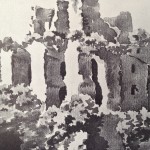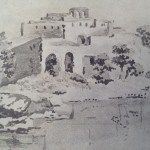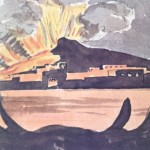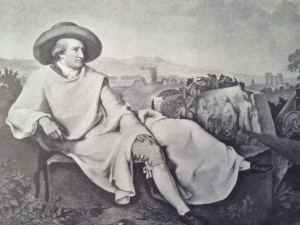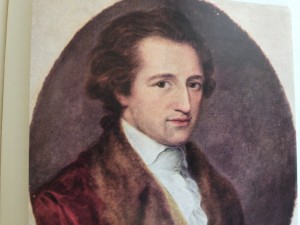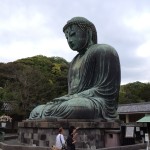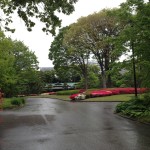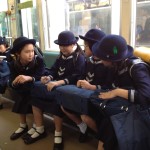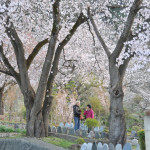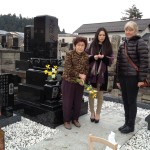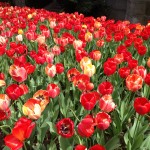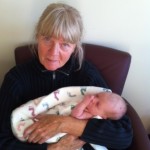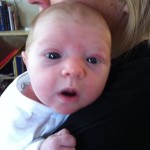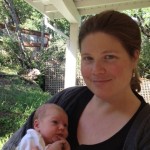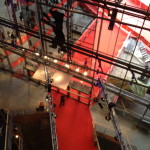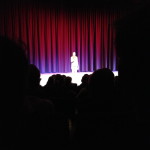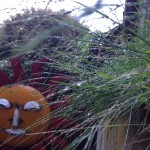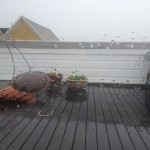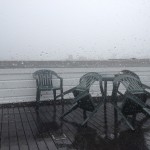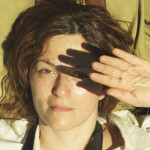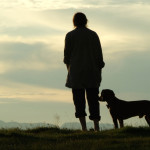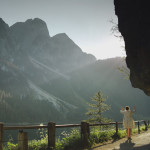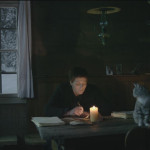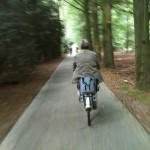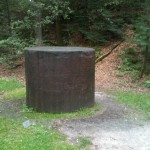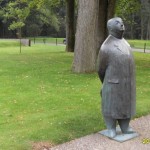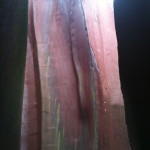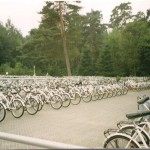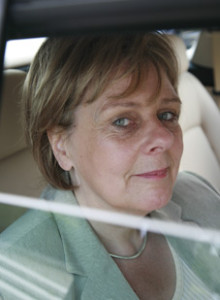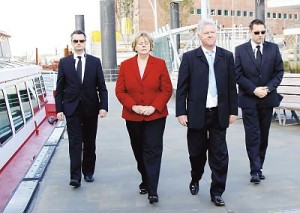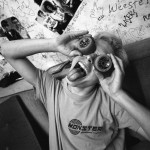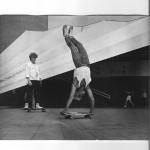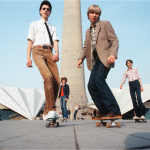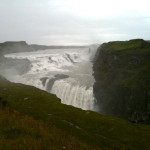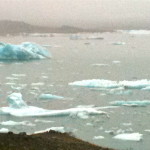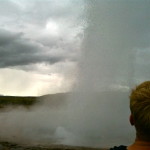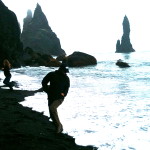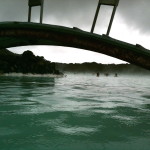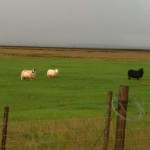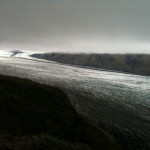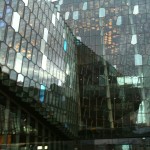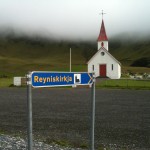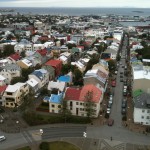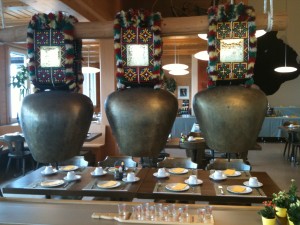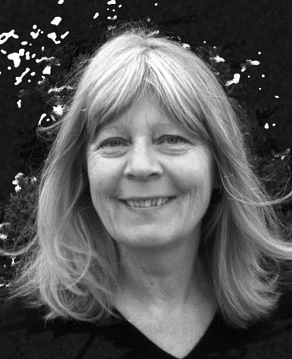Comments about Films & other topics related to things German and beyond will be posted here in English or German by Ingrid Eggers. Check back often!
_______________________________
6/18/14
FRAMELINE 38
Here a selection of German films at this year’s Frameline festival – all in German with English subtitles and there are more than these three that I can recommend for very different reasons. Let me start with THE CIRCLE / DER KREIS ( photo left) by Swiss director Stefan Haupt, who some of you might remember from UTOPIA BLUES, the audience favorite of the 2002 Berlin & Beyond Film Festival. Throughout his career as filmmaker, Stefan Haupt has tackled a variety of topics and genres, from music film (Utopia Blues) to documenting the phases of dying of Elisabeth Kübler-Ross who did exactly that in her groundbreaking work, and this recent docu-drama retelling a little known chapter of postwar gay history in Switzerland. Once I got over the fact that the actors did not resemble Röbi and Ernst, who lead us through the story (the actors should have been switched), I got into the captivating history of The Circle, a magazine and their subscribers so far ahead of what was happening elsewhere in gay circle in the late fifties. In Germany homosexuality was outlawed by infamous paragraph 175, in Switzerland a law against homosexuality was abolished in 1942 but around 1960, when Swiss authorities realized what THE CIRCLE subscribers in Zürich were up to, they cracked down on them and eventually drove them underground until the late 1990s. The love story between Röbi and Ernst closely attached to the ups and downs of THE CIRCLE finally comes to a happy end with gay marriage fully legalized in Switzerland in 2008.
Watching this film I was reminded of what happened in Switzerland during the second World War. The country had officially declared neutrality but Jews who thought to be save there, were shipped to the camps and neighbors reported Jews to the authorities. DAS BOOT IST VOLL, an Oscar nominated film from 1981, told the harrowing story. The Swiss seem to be more than just law abiding, they sense what it is that the authorities might object to and, being afraid of doing the wrong thing and being punished, become voluntary informers. After all, in 1943 they didn’t want Jews living next door and 20 years later they didn’t want gays as neighbors. In Germany, the situation was clear, there was a law and if you break the law you commit a crime. Paragraph 175 was abolished in 1988 and finally revoked altogether after unification in 1994.
OF HORSES AND MEN from Iceland still fresh in my memory, I was curious to see what veteran German filmmaker Monika Treut had to add to the majestic animals and their human companions. OF GIRLS AND HORSES is a different story. Horses are shown in their full glory – more so than in the Icelandic film – they are not sacrificed, they are treated with respect and love and, like in the Icelandic story, they bring about change, here to a troubled girl that, in the end, will find her calling and a new love. Shot by Birgit Möller, director of VALERIE, (winner of the Best First Feature of Berlin & Beyond 2008), the images immerse us into the green, flat, endless landscapes of north Germany. I got home sick watching the film – the horses, the colors, the horizons touching the sea, beautiful. The story of the troubled teenager being reigned in by an understanding and attractive female horse trainer didn’t touch me much, but the cinematography did.
FEUCHTGEBIETE / WETLANDS adapted from the bestselling novel by Charlotte Roche starts with a reader’s comment published by Bild online: “This book shouldn’t be read or adapted to film. It is not more than the mirror of our sad society. Life has much more to offer than the disgusting perversity of the human heart – We need God.” Touted as the craziest, most outrageous film at Sundance this year, WETLANDS will attract the unsqueamish, for sure. A teenage girl’s fascination with bodily fluids and odors leads us through vulgar anatomical explorations and sexual misadventures. Director David Wnendt picked the right face for this unusual tour de force, the innocent, cute looking Swiss actress Carla Juri. Wnendt’s first feature, the haunting neo-Nazi drama DIE KRIEGERIN /COMBAT GIRL, catapulted Alina Levshin into stardom, and rightly so. That he continued his directing career with WETLANDS came to many as a big surprise, but again, Wnendt made a big splash, only this time with very different fluids.
MARK YOUR CALENDAR: WETLANDS will be shown in San Francisco theaters starting September 19.
___________________________________
5/27/14
FILMS & FESTIVALS
The International Film Festival ended a few weeks ago and I only saw a few films that I picked because of country–Iceland, language–Spanish, title–Happiness. There was much more that piqued my interest and, mea culpa for not trying harder, perhaps with granddaughter snuggled up on my arms it would have worked just fine. Let me start my comments with THE GALAPAGOS AFFAIR: SATAN CAME TO EDEN, because it is about crazy Germans, a film shown in SF theaters during the festival by local filmmakers Daniel Geller and Danya Goldfine. I had expected beautiful shots of the islands, of birds, turtles perhaps even Darwin’s stop at the Galapagos, but the filmmakers did not go that way. They focused on what the German couple experienced when they escaped Berlin of the late twenties to live in solitude and barren nature. Looking for Eden they soon found more like-minded people who brought with them what everybody had hoped to escape: trouble. The story turned into a murder mystery that took too long to be solved. We knew the culprits early on and didn’t need everybody’s view of what might have happened. I would have preferred to hear more about the island, what was growing there, what did the Germans plant for daily food supplies, who was living there before them. The limited archival footage had to cover four years of the adventure(1930-34) in a long two hour film. Less would have been more.
Next: Iceland, another remote island. I went there two years ago and loved every bit of it. Did ride the horses, almost got stuck in quick sand, but my strong, little horse made it.
OF HORSES AND MEN, a German co-production – reminiscent of OF MONSTERS AND MEN, an Icelandic pop group, is an homage to the horses, not the men. The horses are used as mirrors for human failures and then punished for it. It is all presented with a light touch, we can laugh about it but still, the horses are castrated and killed to save man in his pursuit for alcohol, sex and horseback riding. In the final scenes, however, the horses are paraded in their full beauty.
CLUB SANDWICH, by Fernando Eimbcke from Mexico City, was supposed to help my Spanish – 3 weeks before the final of Spanish 10c I took at City College. Alas, I didn’t understand a thing, although there was very little dialog in the film. Mother and 15 year old son spoke little and always the same few sentences, but still hard to grasp. Dialect, said my Mexican friend, who had a hard time to understand himself. I was glad. The film was slow, very slow and I like slow films. But something has to happen inside my head to prevent me from getting bored. And I got bored. A mother who could not let go of her son. Shot in the same low budget hotel with no extras around except for an even more taciturne family that arrived half way through with a 14 year old daughter that is active enough to take the son away from his mother. The film was shot on 35mm but shown in a digital format, too bad 35mm projection might have saved it.
HAPPINESS, a touching, poignant statement about civilization, progress and misguided happiness. Beautiful Bhutan, simple people attracted to what many of us have tried to get rid of: TV. The final shots of the film, a European co-proction for ARTE, will stay with you for a long time: a poor family in the high mountains of Bhutan, with open, smiling faces, lots of missing teeth, shiny, black hair that hasn’t been washed in ages, sitting in front of a TV, watching an American ballgame, not understanding a thing but HAPPY.
PS FROM NEW YORK
BELOW DREAMS, a film that my daughter Milena shot, screened at the Tribeca Film Festival when I happened to be there in April. Lucky mom. I had just seen the new memorial built on Ground Zero, walked between glitzy highrises and dark pools that sucked in, not just water but the dreams dreamed in the two towers that once stood above. The title of the film I was about to see could not have been more fitting for the memorial. BELOW DREAMS is a first feature directed by Garrett Bradley, a multimedia artist, who took us on a road trip from New York to New Orleans where three young people tried to put together their shattered dreams. A mother of three, homeless, jobless, wants to be an actress. A black man would would take any job offered to him, and a twenty-something man from New York who arrives by Greyhound in search of his girl friend. Gritty, rough images alternate with long shots of a sunset behind a gas station, or the mother’s distraught look into an uncertain future. A small gem that might not end up in movie theatres but in the New York Times and other print media that noticed it’s beauty.
_______________________________________
3/29/14
SAW IT ON TV : GENERATION WAR & WEISSENSEE
It was easy to miss the week-long run of GENERATION WAR. It screened for a week at Embarcadero and then no place else in the Bay Area. For the US release by Music Box, the hugely successful TV (ZDF) mini series, originally called Our Mothers, Our Fathers, was edited into a 2 part 280 min-long film. A war movie with all the great production values we are used to by now; perhaps with the “best representation of close combat ever filmed” says David Denby of the New Yorker. We follow five young Germans, 2 brothers fighting in the Wehrmacht, a nurse, an aspiring singer, and her Jewish lover, through 4 years of war and witness how they are brutalized by what the war on the Eastern front and the Nazis put them through. Three of them survive, including the Jew. A WW2 film trying to give a collective portrait of a generation, highly acclaimed by the German media for opening up a dialog between old and young about accountability and forgiveness. I hope it did. I would have preferred a documentary addressing these issues that are so painful, so complex, so explosive that it calls for much more than a popular melodrama like approach. The film includes every possible horror of the war, from close combat to executions, hangings, betrayals, to partisan cruelties and field hospitals with lots of screaming and blood. Nothing has been left out – except concentration camps. The 5 protagonists celebrate in Berlin the night before leaving for the front and we know that at least a few will survive and come back to that same bar, changed and in rubble. On the vast Eastern front they keep bumping into each other. The brothers, one a bookish war hater turns into a killer, whereas the responsible, stern lieutenant becomes a deserter. The young Jew hides in the woods with Jew-hating Polish partisans and survives against all odds – it makes for good story, but we don’t get much inside into the only Jewish character in the film. The roles of the two women, a naive nurse that for no apparent reason betrays a Jewish doctor urgently needed at the front, and the singer, carrying on with an SS officer to save her Jewish lover and advance her career, are bordering on trite stereotypes. Five hours of too much that left me with too little.
Very different is WEISSENSEE, a TV (ARD) series of 12 episodes. 45 min ea. that premiered in 2010.
An East-Berlin love story, taking place around 1980 and flavored with everything we know from The Lives of Others, focuses on two families at the opposite end of the political scope. The Kupfers main players are the father (Uwe Kockisch) belonging to the old Stasi bosses who wanted to change society for the better. His two sons, the older (Jörg Hartmann) following the party line faithfully not because his father knows Honecker, but because he is overly ambitious and can’t deal with failure. In different times he would have made a great bank manager. The younger brother (Florian Lukas), a police man (VoPo), has no intention to rise in his job except into the arms of his lover (Hannah Herzsprung), who belongs to the Hausmann family on the other side of the fence. Her mother (Katrin Sass), a wonderful Lieder-singer, who like many of the GDR Liedermachers in the late seventies (Wolf Biermann comes to mind) openly critiques the system. With a rebellious daughter who is in love with the son and brother of party bosses, with performing anti-regime songs and a former love affair with the father of her daughter’s lover, the question is, how will she and her daughter have to pay for it all. Like Generation War, the story depends on conventions of popular melodrama – a Romeo/Julia love story, contrasting brothers, a singer, betrayal, pregnancy, spying, murder, prison, forgiveness – but no painful clichés, no obvious good guys versus bad guys, all characters, even the party-faithfuls, do not come across as creations of a smart script writer, but as humans who, under pressure, do not resist the temptation to be human. Once you start watching, you can’t stop. Too bad that this series has not made it to the big screen in the US.
_________________________
2/20/14
TO THE LIGHTHOUSE
A shuttle bus from Drakes Beach visitor center drops you off less than half a mile from the Point Reyes lighthouse. Walking under storm-bent fir trees with views of beautiful beaches, featuring elephant seals fighting for the best place in the sun (or fog), you come to the top of 302 steps leading down to the historic lighthouse. Built in the 1860s with the latest lens technology (Fresnel lens from France) it started operating in 1870 and has not changed until it was decommissioned in 1975. A windy spot, often so foggy that many ships could not be saved by the powerful beacon, but many crews members got rescued by the coastguards on duty. Today the lens is replaced by a solar powered beacon located below the lighthouse. Going up the 302 step is a workout that will justify a delicious lunch at Drakes Bay Oyster farm. It was a bit chilly but you quickly forget when slurping piles of fresh oysters, and close the meal with local cheeses from Nicasio Valley. Don’t forget to bring a bottle of wine and sign the petition to save the oyster farm from government take-over.
__________________________________
1/20/2014
A WEEKEND AT BERLIN & BEYOND
At the Berlin & Beyond film festival in the beautiful Castro Theatre, my old stomping ground. Friday night’s program in a packed house started with plenty of long speeches followed by a short live performance of a Wagner song to introduce LUDWIG II, the centerpiece piece film. Good to be reminded that without Ludwig Bayreuth, which was not mentioned in the film, might never have been built. Veteran director Peter Sehr, who died of brain tumor shortly after the release of this film, focused on Ludwig, the pacifist, who hated politics and loved art, music and, of course, Wagner. The 2.5 hrs long film felt long, although it was fascinating to watch Sabin Tambrea’s dexterous portrayal of young Ludwig. No time was wasted with the construction of the castles, all stages of mad Ludwig’s life up to his mysterious death in Starnberger See at the side of his physician were included. Still, something was missing, or less might have been more, as the Dubini brothers demonstrated in their Ludwig 1881, shown at B&B 97. Perhaps Visconti and Syberberg are simply hard acts to follow.
SHORES OF HOPE /Wir wollten aufs Meer, by Toke Constantin Hebbeln (his wonderful debut film NEVERMORE was shown at B&B 2007), tells the story of friendship and betrayal among shipyard workers in East Germany. Stasi surveillance, torture in State prisons, good inmates, bad guards and even worse Stasi officers, love and lies, all that felt like it could have been a film about the Holocaust. Ever since The Life of Others hit the screen films about life in East Germany often became interchangeable with Holocaust films. SHORES OF HOPE is one of them. I much preferred watching the German TV series WEISSENSEE about the same topic with a more sensitive and clever story. A very different and more compelling way to approach the subject is shown in WEST by Christian Schwochow (his debut film NOVEMBER CHILD was screened at B&B 09). After having lost the man she loved and the father of her child, Nelly tries to escape from the past and start a new life in the West which turns out to be much more difficult than expected. Not only is she confronted with the usual humiliations but with the suspicion to be a spy and accusations that turn everybody around her, even the man she loved, into a suspect. Is there no escape from the past? Powerful, touching, with great performances, especially by Jördis Triebel (Nelly) who some might remember from EMMAS GLÜCK.
MEASURING THE WORLD concluded my B&B weekend. I love the book by Daniel Kehlmann and was warned that the film does not hold up to it. I agree but it was not a waste of time. Kehlmann, the screenwriter, was not able to translate the insightful, historically rich and often hilarious interaction between Gauss and Alexander von Humboldt onto screen. Two scientists, albeit geniuses, do not make for a compelling film. Nature becomes the third major player in this 3D film, which reminded me of THE WALL, another difficult translation from book to film that worked well because the breath taking Alps featured as companion and counterpoint for the lonely woman. Here it is uncharted territory in Latin America around the turn of the 18th century that keeps the story alive.
I would have liked to see the amazing cinematography of MORE THAN HONEY on the big screen of the Castro – it was shown at the Goethe-Institut. The Q&A with Christian Schwochow after WEST could have been longer (there were many more questions and plenty of time), but I remember how difficult it is to please everybody.
______________________________
10/30/13
ZWEI LEBEN – OH BOY – DER FALL – DER GESCHMACK VON APFELKERNEN
I saw a few German or German-language films, over the last months, all of them award winners, critically acclaimed or included in a film series here in San Francisco. OH BOY was an add-on and the only German film, I noticed, at the Mill Valley Film Festival; DER FALL the opening film of Sister Cities: Zürich-San Francisco, presented by the SF Film Society; ZWEI LEBEN, Germany’s Oscar bid, and THE TASTE OF APPLE SEEDS with its high profile cast opened in German movie houses this September. DER FALL, a Swiss film from 1972, that never made it into the international festival circuit – thus not subtitled until its screening in SF a few weeks ago – will be pretty impossible to find. A black and white film taking place in a grey, cold Zürich full of unattractive industrial buildings and train tracks – not the Zürich we know with perfectly restored old houses around a beautiful lake with high-end designer stores where even Oprah is tempted to shop. It is a Zürich populated with failures, hippies (who don’t smoke – my friend noticed that nobody was smoking in this film from 1972), sick people, jealous husbands, and a pathetic private detective who makes his living snooping around other people’s lives. When he falls for a young chick that has already destroyed at least one marriage, the detective is doomed. Why is he attracted to her? God only knows, I couldn’t figure it out.
ZWEI LEBEN kept me glued to the screen. A twisted story about a mother (Liv Ullmann) who thinks that the young woman she has been living with (Juliane Köhler) is her daughter. There are many movies about unknown fathers but mothers would know, we think, unless their babies have been switched in the hospital. Here the mix-up points at disturbing politics of both, Nazi and Stasi Germany . Great performances by both Köhler and Ullman. A complicated beginning – because the plot is complicated – and an ending that seemed too constructed, but altogether a powerful film. — DER GESCHMACK VON APFELKERNEN, with an impressive cast of Germany’s best – Hannah Herzsprung, Marie Bäumer, Meret Becker, Florian Stetter. They had too many stories to tell covering too many generations, places, relationships. I gave up after the first half hour to figure out what was going on and got bored. — And last but not at all least OH BOY, Tom Schilling’s 80 minute screen appearance. He must have been in almost every shot but it didn’t feel forced, boring or overpowering like Michael Gwisdek’s soliloquy – well articulated although drunk – about life and death and politics. Schilling’s face is innocent, young, honest, not changing much while we accompany him over 24hours through Berlin. Yes, it has been done before, many times, but this film felt fresh and touching, like a deep breath of Berliner Luft.
________________________________
10/9/13
SEPTEMBER TRAVELS: Poland – Auschwitz
Pick up at the hotel at 11am, return at 7pm. A tour to Auschwitz with about 20 people in our bus from six different countries. Throughout the 70 minute bus ride a DVD of the 1986 film THE LIBERATION OF AUSCHWITZ, by Irmgard von zur Mühlen, in Polish with English subtitles. I felt sick when we finally arrived, the film had done its job. We were assigned to the language we had requested. There were about 20 different ones offered every day and while the organizers ran around calling and waving signs and putting stickers on our jacket not to get lost in the turmoil of visitors pouring out of huge tour busses, the film I had just seen, faded away and last year’s visit to King Ludwig’s castles in Bavaria came to my mind. Was I visiting a Polish Museum with a permanent blockbuster exhibition? “The tour starts in 5 minutes, ” announced a young woman. “It will last about 90 minutes. Bathrooms are downstairs, drinks and small snacks can be purchased and must be consumed before the tour starts. No eating on the compound.” Everybody stormed downstairs for the toilets. Long lines. Finally, equipped with headphones that allowed you to receive only the German guide if you pressed the correct channel, our small German group, passing masses of English, Spanish and Polish speaking visitors, headed for the infamous sign, Arbeit macht frei. Rows of barracks, Blocks, built of brick, numbers above the entrance. Some turned into exhibition space with walls covered of head shots and names, all Polish. Suitcases, brushes, shoes, and hair, real hair, behind glass, hand written letters to loved ones. Instead of tears cameras in front of the visitors’ eyes. Click, click. Then to the next Block. Our guide talked fast, a routine job. No time for questions. The last Block, the prison, where people were interrogated, tortured, killed no photos allowed, only outside at the wall that still seemed to show traces of blood from the countless executions. — End of the Auschwitz tour. Next stop Birkenau. Only 10 kilometers away but too far for most of the tour busses. Vast, empty fields of long barracks built for 100 000 prisoners. Most barracks destroyed by the Nazis themselves to cover up their crimes. We walked along the train tracks, stood at the ramp where those found fit to work were separated from their children and parents. The gas chambers not far from the ramp. It was a rainy, grey afternoon and all I could think of was the huge machinery behind the horror, that was necessary to make it all work. Thousands of people were involved in organizing and executing this machine made for human beings that were treated like cattle, like material. Fit for work or not. And the unfit were killed in the most efficient way or used for horrific experiments. Whatever the Germans do, they do well. No more comments.
——————————————————–
10/7/13
SEPTEMBER TRAVELS: Poland – Krakow
Krakow: old, beautiful, relaxed. Lots of churches, cafés, parks, open spaces. We stayed at Helena Rubinstein’s birth place in the heart of the Jewish Quarter across from the Jewish cemetery and the only active synagogue that serves the remaining 10,000 Jews in Krakow. All three of these locations are tourist attractions, together with Schindler’s Factory. Helena’s family left Krakow in 1914. Not far from the Jewish Quarter is the castle, the old town square with cafés, an old market place now catering to tourists, and churches on every street corner. The best place for food is an outdoor market that serves roasted sausages, pig’s feet, ears, ribs, and whatever else a pig has to offer. Good luck for vegetariens — but there will always be borscht. Poland’s history has been a sad one, many divisions, take-overs by aggressive neighbors like Russia, Germany, Austria. Only recently did the Poles produce their own heroes to be proud of — Pope John Paul II, of course, former Bishop of Krakow, and Lech Walesa, charismatic political activist and leader of the trade union Solidarity, that helped turn around Polish history. Andrzej Wajda’s latest film, an homage to Walesa, premiered in a huge industrial compound outside of Krakow and I was lucky to be present. Wajda (85 years old and sick, according to his wife) couldn’t make it, nor Walesa or his family joined the three thousand plus crowd that watched the film and applauded reluctantly. That’s the Polish way, commented a friend, they don’t overflow with enthusiasm. Or did they – like me – not like the film?
_________________________________
10/5/13
SEPTEMBER TRAVELS : France
The Périgord Noir was my destination. Known for its food (foie gras, truffles, black walnuts) & wine (Bergerac red and white), its prehistoric caves (Lascaux, les Eyzies) , and unspoiled nature with the Dordogne and Vézère meandering through green valleys, it’s a must for Francophiles and foodies. Yes, I wanted to try the local specialties, but liver of tortured geese and ducks? As soon as I mentioned San Francisco as my home, I was assured that the birds are treated fairly in the process of producing the famed liver that ended up in my suitcase. And when I left Bergerac I had to promise at customs to drink good French wine with it in CA, otherwise only one small can would be allowed. Yes, I promised. No coke, no sprite. Everything in the Vézère area seemed ancient and beautiful. Our hang-out, St. Léon sur Vézère, had a church from the 10th century with amazing acoustics, three fabulous restaurants and a tiny grocery store with the best French wines and cheeses. — The caves in les Eyzies and Rouffignac show an impressive array of 12 to 17 thousand-year-old paintings and drawings of auroches, horses, deer, very much like the art we know from Werner Herzog’s film about Chauvet which dates back to 35 thousand years ago. The same style, the same animals, the same colors but different artists who could not have known each other. Fifteen thousand years of unchanged art and unchanged life. I felt claustrophobic but also a bit nostalgic in this very slow moving world and did not mind that the Grotte de Rouffignac had just closed for lunch when we arrived at noon.
_______________________________________
9/4/13
HIMMEL ÜBER BERLIN
Always changing, always dramatic, always beautiful. And underneath this sky seen from my balcony in Kreuzberg on a weekday evening, people ride home from work (lots of bicycles in Berlin), meet friends in a sidewalk café, spend hours reading the Zeitung on the banks of the Paul Linke Ufer or listen to eclectic music at the entrance to Türkenmarkt on the Maibachufer across from my apartment. Life in Berlin is much more relaxed than in San Francisco, and much much more relaxed than in LA. Here people take their time to talk to friends, walk their dogs (most don’t pick up the poo), watch the sunset with a beer in their hand. Officially drinking beer is no longer allowed in the subway. Thank god, I thought, no more broken glass all over the Ubahn stations and parks on Sunday mornings, but Berliners don’t follow the rules. They cross red lights, bike on sidewalks in the wrong direction, drink on the subway despite the ordinance. Well, breaking the rules is something I always appreciate, especially from Germans. That’s why I love aBerlin.
There are lots of German films on my agenda: FEUCHTGEBIETE, WEST, FINSTERWORLD, TWO LIVES, Germany’s entry for the 2014 Oscars. Hope they will make it to the theatres while I’m here in Berlin. You can count on my comments.
____________________________________
8/14/13
THE ACT OF KILLING & THE BANALITY OF EVIL
Both films, Hannah Arendt and the Act of Killing, are shown next to each other at Opera Plaza Cinemas in San Francisco. If you haven’t seen them, take an afternoon or evening off and go through hell. It will haunt you for days, especially The Act of Killing, a documentary in Werner Herzog’s style ( he is one of the executive producers), where the boundaries between reality and fiction are fluid and boundaries between reality and film become so undistinguishable that at the end I thought, it was a Hollywood movie I had just seen about torture, terror, killings and smiling gangsters who had committed the brutal acts. Inspired by Hollywood movies the killers in Indonesia who, in 1965, after Sukarno was ousted by the military, killed in a year about a million Sukarno supporters by cutting their throats, beating them to death, strangling them with wires (it was less bloody) and to this day have lived almost happily ever after. The government that supported the coup is still in power. The perpetrators, common people, who love to dance and act out, cross dress and boast about the atrocities they committed, have raised children and grand children telling them about their bloody past without feeling any remorse. At the end of the film, one of them (who looks so much like Nelson Mandela!) has stomach convulsions, he bents over in pain and throws up into the trough where he had slaughtered thousands of innocent people. Is it real? Or is it another re-enactment, this time of remorse? Was I supposed to feel any relief, may be even empathy with this brutal killer now that he finally felt some stomach pain? No, I didn’t feel any. I was just wondering when and if he would ever face a court of justice —like Eichmann.
When THE ACT OF KILLING was shown at the Berlinale 2013 people asked Joshua Oppenheimer, the director, if he could imagine making a movie about Nazis (if still alive) re-enacting the Holocaust. There are many similarities, yes. In both cases the unsuspected, common man committed the crimes. Not a monster but a neighbor who, in Indonesia, danced the Cha Cha Cha expertly and loved Hollywood movies. In Germany he might have belonged to a police battalion from Hamburg, a left-leaning working class city that didn’t support the Nazis early on. (See Goldhagen www.
For more on The Act of Killing here some links to the NYT http://www.nytimes.com/2013/
No Bali for me —but I do have a small flat in Berlin.
__________________________________
8/4/13
HANNAH ARENDT on film
at the Jewish Film Festival and now at Opera Plaza in San Francisco
A week or so ago at the Jewish Film Festival in San Francisco I saw Margarete von Trotta’s latest film HANNAH ARENDT, highly anticipated not just by me but by a sold-out Castro crowd. Ever since it’s premiere at the Toronto Film Festival last September we have been waiting for von Trotta’s take of the outstanding Jewish philosopher/thinker/political scientist who escaped Nazi Germany and then France to settle down in New York where in 1961 she shook up the Jewish intellectual community with her reports on the Eichmann trial. Von Trotta’s film focuses on this year or two of her life – not on her relationship with writer Mary McCarthy as suggested by an article in the New Yorker from May 2013. This is not a film about Arendt’s philosophies, her way of dissecting the world, but about a few action packed months of the philosopher’s life that were full of controversy, tension and accusations.
Her reports for the New Yorker portrayed Eichmann not as the devil, the incorporation of all evil, but of the “banality of Evil”, an ordinary guy who followed orders and did not think about the consequences. The Jewish intellectual community of New York and beyond condemned her analysis as a defense of Eichmann, lacking any feelings and emotions for her own Jewish people. Did the term “banality of Evil” spring from a cold, albeit brilliant intellect that had dissected the trial without being able to feel any compassion? Formidable Barbara Sukowa (seen here most recently in VISION, another collaboration with von Trotta, shown at German Gems 2010) gives a strong, nuanced (chain-smoking) performance as Arendt who, confronted with harsh criticism also from close friends, does not give in. She can handle hate mail, yes. She can escape to the country, has friends and famous lovers, like Mary McCarthy, (Heidegger included in flash-backs), she has a loving, open-minded husband and many devoted students. I agree with those who say that this strong, highbrow woman might have found in von Trotta’s film some of the mediocrity she detected in Eichmann (and failed to see in McCarthy’s writing). Still, it is very worth watching the film and reengaging in the discussion about Eichmann in Jerusalem.
After 50 years the audience at the Castro seemed to be just as divided as the readership of the New Yorker in 1962. When Arendt /Sukowa defended her position in front of her students with a brilliant speech half of the Castro applauded, the other half applauded her Jewish friend Hans Jonas who criticized Arendt as a defendant of Eichmann
 The Castro felt very alive, as if the actors had stepped out of the screen onto the stage of the theatre, like Barbara Sukowa did a few years ago as guest of Berlin & Beyond and star of the film THE INVENTION OF CURRIED SAUSAGE / Die Erfindung der Currywurst.
The Castro felt very alive, as if the actors had stepped out of the screen onto the stage of the theatre, like Barbara Sukowa did a few years ago as guest of Berlin & Beyond and star of the film THE INVENTION OF CURRIED SAUSAGE / Die Erfindung der Currywurst.
Here a review from the NYReview of Books 11/21/13. An insightful take on this film, different from all the reviews I read. http://www.nybooks.com/articles/archives/2013/nov/21/arendt-eichmann-new-truth/
_______________________________
6/19/13
GOETHE ON MY MIND – Nach Goethe steht mir der Sinn
In meinem Bücherschrank fand neulich ich eine wunderschöne Ausgabe von Goethe’s Italienischer Reise, ein Bat Mitzvah Geschenk für meine Tochter Milena von ihrem Patenonkel Charles Rosen. Natürlich auf Deutsch ohne Übersetzung, was Charles sicher so nebenbei las, während er auf dem Klavier Fingerübungen machte und dabei nicht nur Goethes zum Teil lange und verschachtelten Sätze verstanden, sondern in seinem Kopf behalten hat. Charles war ein außergewöhnlich kluger Kopf, der einen ganzen Abend damit verbrachte mit seinem Freund Henry die Vornamen deutscher Dichter und Denker des 18. Jahrhunderts aufzuzählen – Lessing: Gotthold Ephraim, Schlegel: August Wilhelm, ETA Hoffmann: Ernst Theodor Wilhelm, Mörike: Eduard Friedrich, Wieland: Christoph Martin, Wackenroder: Wilhelm Heinrich, Hegel: Georg Wilhelm Friedrich und natürlich Goethe: Johann Wolfgang. Er kannte viel mehr als ich, die ich zu der Zeit Literatur studierte und mich an dem Spiel beteiligte so gut ich konnte. Die Ausgabe der Italienischen Reise enthält sowohl Faksimiles von Goethes Zeichnungen und Malereien, die während der zweijährigen Reise entstanden, als auch von Tischbein, Kniep und anderen Malern, die ihn begleiteten und oft auch portraitierten. Der Reisebericht ist erst 30 Jahre später veröffentlicht worden, nachdem Goethe viel Persönliches und wohl auch Intimes, herausgenommen hatte. Dennoch gibt es Anekdoten, die die Wahlverwandtschaften andeuten, ein Faksimile der 5. Römischen Elegie, Liebesgedichte, die auch erst nach seiner Rückkehr veröffentlicht wurden und Beschreibungen von Frauen, die ihm am Herzen lagen. Was mich an den Tagebuchberichten fasziniert ist ein Goethe, der sich selbst nie in der Vordergrund spielt, fast bescheiden von dem berühmten Dichter schreibt, der incognito reist, sich oft nur zögernd zu Erkennen gibt, Gemälde bemängelt, die ihn nur als “hübscher Bursche, aber keine Spur von mir” darstellen, die Schwächen seiner eigenen Malerei sehr genau erkennt und das Talent, was ihn vor allen andern auszeichnet, die Kunst zu Schreiben, nie zur Schau stellt. Braucht er auch nicht, denn man hat das, was er meisterhaft beherrscht, vor sich, die wunderbare Beschreibung der Italienischen Reise.
________________________________________
5/18/13
FROM SAKURA TO XIHU
My long overdue trip to Japan finally happened – I had tickets for March 11, 2011, when earthquake and tsunami devastated the country but this time I was greeted by friends who had nearly forgotten the disaster and beautiful cherry blossoms (sakura) in Yamagata, 30 min. away from Fukushima. I stayed with families throughout the 10 days in Japan, shared a tiny apartment and a loving relationship between a 70 year old mother and her 45 year old daughter in the middle of Tokyo, and up North I joined 84 year old grandma visiting to her husband’s grave, soaked with mom in the hot springs, while dad in his brand new mercedes with tv and all the gadgets prepared the tour route to the best cherry blossoms and the oldest temples. I am one of the very few who went to Japan and left out Kyoto, a reason for me to return.
After a 3 hour flight I landed in Shanghai. A culture shock, warned my friends, and they were right. 100 square kilometers of city that never ends with buildings that looked like East-German Plattenbau, some much worse than what I saw in East Germany years ago. They were interspersed with beautiful old buildings from colonial times, many restored – the famous Bund with banks and hotels that cater to tourist and the many rich in Shanghai – others terribly run down, windows and doors absent, laundry covering the open holes. The fantastic subway system always crowded with pushy people is like a city below a city. Be prepared for very long walks if you have to change lines and you better know your exit, otherwise another long walk. Tokyo’s metro is similar but it feels different, people don’t scream into their cell phones, don’t push you around. And, thank God, I was not driving in China, just sat in taxis and friend’s cars fearing for my life. Rules don’t seem to exist, or they are tested to the max. Hangzhou is known for being one of China’s beautiful cities. Like Shanghai, it has a wide, slow moving river with slow moving barges that look like big black pieces of wood flowing down the river. There is a romantic, large lake – Xihu or Westlake in Hangzhou, a “Fussgängerzone” like in German cities where you can see the remains of the thousand year old city wall, many beautiful pharmacies from around 1650 where lots of patients visit doctors and buy strange herbs, There are silk shops where big balls of raw silk are sorted and sieved by hand and a silk road for tourist to buy silk products, and a wide variety of Chinese and western restaurants. If you visit Shanghai, stop in Hangzhou, it’s only an hour away by fast train and tickets are much cheaper than in Japan. I didn’t loose my heart in China though, too many people who think of nothing but work, family and making money by selling something — very different from the Japanese where salesmen or women would rather hide in their shops than try to talk you into buying something. Would like to go back to Japan to visit Kyoto and hike on the Kumano trails.
4/8/13
SPRING HAS ARRIVED with new German Films at SFIFF 56
Check out the German language films (Austria’s MUSEUM HOURS and Switzerland’s ROSIE – included). I have not seen any of these films but heard from friends who went to the Berlinale that DAS MERKWÜRDIGE KÄTZCHEN / The Strange Little Cat was the best German film at the festival in 2013, it was shown in the Forum section. I’m very pleased to see that it made its way to San Francisco so fast, in previous years Berlinale films would have to wait for the next spring to be included in the SFIFF. Sorry to say that I will be in Japan and China during the festival, bad timing for a trip that was long overdue. But I hope to get your feed back.
Also a “Musikvideo der Woche” made by Milena (my daughter) during her Berlinale 13 visit. Jeans Team came to SF a few times over the past 10 or so years and some of you might remember — here “Berliner Schnauze” at its best:
http://detektor.fm/musik/
____________________________________
3/18/13
ELLA born March 8
My granddaughter arrived and she lives close by, so I can visit often and soon do all the things grandma is supposed to do, like teach her how to blog… I can see talent there, yes, bloooooog, she said on day 5, but mama has doubts.
______________________________
3/3/13
GERMAN FILMS AT LANDMARK THEATRES
Landmark Theatres has several acclaimed German films opening in our venues in San Francisco and the East Bay. These 3 upcoming movies LORE, THE SILENCE, and BARBARA promise to be riveting and definite food for thought for any German affiliated groups. My comments about BARBARA (Germany’s bit for this year’s Oscars) are further down on this blog, yes, worth seeing. THE SILENCE I saw at the Munich Filmfest when it premiered there in 2010, a film packed with village oddballs and lots of suspense that did not quite work for me. Couldn’t put the puzzle together but you might. LORE, Australia’s Oscar nomination for 2013, takes place in Germany, is in German with German actors, and tells a riveting war story.
Check the movie pages for times at the various Landmark Theatres, BARBARA will open March 8, LORE and THE SILENCE are playing now at Embarcadero and Shattuck in Berkeley.
2/12/13
DER DEUTSCHE PAPST
Yes, the Pope is German which qualifies him to get a space on my blog. I clicked on his resignation speech given in Latin and written by a press woman on his staff who seems to know Latin as well as he does. Why in Latin? Are those the rules of the game in papal circles? Nobody blinked while he was reading the text, like a sermon he had given 100 times before. No signs of emotions anywhere in the chapel among those who listened or read along with texts in hand. No surprise looks on their faces, not a trace of a shake in the Pope’s 85 year old hands when he was holding this historical piece of paper. The last time a pope resigned was around 1200 AD. Leave it to the Germans, they know how to make history.
Here some critical comments about his rule from today’s New York Times. http://www.nytimes.com/2013/02/12/opinion/farewell-to-an-uninspiring-pope.html
________________________________
2/11/13
BERLINALE & BEYOND
Photos by Milena Pastreich
The only German film in the competition of this year’s Berlinale, GOLD, by Thomas Arslan who is know for making films in the Berliner Schule tradition (i.e. slow, composed, detailed) seems to have tried something different, a German Western starring wonderful and ubiquitous Nina Hoss. Here a review from DER SPIEGEL http://www.spiegel.de/kultur/
2/3/13
Don’t miss these German films showing in the Bay Area – there aren’t that many and these are favorites of film snobs and other film apassionatos. At Cinequest ,O BOY, a new film recommended highly by Charlie Cockey, one of the snobs and programmers of Cinequest, and RUN LOLA RUN screening in Petaluma. She has been running for many years but hasn’t lost any of her appeal, especially after Tom Tykwer’s latest disappointing collaboration on CLOUD ATLAS.
http://www.petalumafilmalliance.org/2013-spring-schedule/
_____________________________________
12/1/12)
LINCOLN – HITCHCOCK – ARGO – ANNA KARENINA – CLOUD ATLAS
The best thing to do on a rainy day – and we just had lots of them, grey and beautiful – watch the raindrops or watch movies. Here is what I saw last week, mostly big American productions but the biggest of it all, CLOUD ATLAS, a German coproduction – to stay true to my mission.
LINCOLN: Spielberg had Leam Neeson as front runner for the part and I wonder what the result would have been. Daniel Day Lewis seems the perfect choice. You couldn’t get closer to the real man than this performance. Witty and agonizing, always concerned for others yet talking to himself and his own conscience we see an old man who is willing to have a whole generation of his country slaughtered in order to move history a step forward. The film should have been released before this year’s election to remind people of the difficulty of the democratic process and the cruelties of war, not much has changed since 1865. Well, Obama won without the support of LINCOLN, the democratic process seems to be working.
ARGO: I didn’t know much about this chapter of history which took place in the shadow of the Iran hostage crisis 1979. A well made thriller not always true to the real events – Hollywood seeped in there especially at the end – nevertheless I was fully captivated.
HITCHCOCK: Knowing him from so many of his films and from TV makes it hard to see Anthony Hopkins with round face and stuffed out suit to be the great master of suspense, but after a while you get into it. A curious mix of the “making of” Psycho, of a (famous) husband-(devoted) wife relationship with all the tension, and the master’s obsessions with his blond stars and with the killer in Psycho, it is a little bit like a Hitchcock film without the suspense. We know the outcome of all the story lines which made me look at my watch a few times. But mostly entertaining and engaging.
ANNA KARENINA: It is hard to come close to Greta Garbo as Anna, and Keira Knightley is far from it. Also miscast is Aaron Taylor-Johnson as Vronsky. Both seem too young, too foolish, not convincing of the love and the destruction that Tolstoy had in mind. I liked the monkish Jude Law as Karenin and the boisterous Oblonsky (Matthew Macfadyen). Director Joe Wright squeezed the many layered novel into the refines of a theatre, which is daring but does not really work. The first 20 minutes felt like a musical without the singing – I was hoping that the clerks in Oblonsky’s office would break out into songs. Then several scenes moved from inside the theatre to outside landscapes. Beautiful fields under misty sky and soft heaps of hay to rest in. And a toy train that becomes a real one covered with snow and ice steaming into Moscow station and eventually killing Anna. With so much moral and political conflict to digest and so many characters to follow the setting in a large theatre which, I suppose, should remind us of life being a stage and vice versa, diverts and distracts. Does it contribute to a deeper understanding of the novel. I’m not convinced.
CLOUD ATLAS: 3 hours of wasted time. Ruminations about mankind, its failures and how to save it through love and compassion sound so familiar. It has been done before, better, and shorter. If you like special effects, there is lots of it and if you want to see what make-up can do, then wait for the credits. The 5 or so main actors morph into faces you will not recognize. Great, but it did not save money. The costliest movie ever made and xFilme, Tom Tykwer’s production company in Berlin was part of it. Sorry to see that Tykwer is going that way. I loved his early films WINTERSCHLÄFER, TÖDLICHE MARIA, LOLA RENNT.
_______________________________
(11/14/12)
http://events.berkeley.edu/
BARBARA is playing Dec 21-27 in San Rafael. Great film by Christian Petzold. Highly recommended for all those who missed it at this year’s B&B and those who want to see it again.
http://www.cafilm.org/rfc/
_______________________________
(11/1/12)
Als ich eines Morgens aus unruhigen Träumen erwachte, fand ich mich auf dem Fensterbrett an meinem Haus zu einem grünen Ungeziefer verwandelt. Ich klebte mit den dünnen Beinen an dem weißen Brett und sah, wenn ich den Kopf mit den langen Fühlern ein wenig hob, das Fenster, die Tür und den blauen Himmel über mir. Was ist mit mir geschehen? dachte ich. Ein Grashüpfer, der am Balken von meinem Haus festklebt. Vorsichtig hob ich erst einen dann den anderen Flügel. Sie bewegten sich. Ich beugte die langen Beine ein wenig, auch sie bewegten sich. Vorsichtig ging ich mit allen vier Beinen in die Hocke, die Gelenke federten wie ein Gummiband und stießen plötzlich mit Schwung vom Fensterbrett ab. Ganz von allein breiteten sich im Moment des Absprungs die Flügel wie beim Flugzeug aus und fingen an so schnell zu flattern, daß ich keine mehr Zeit hatte, mich umzusehen. Ich flog. Ein wunderbares Gefühl. Hoch und immer höher lenkten mich die Fühler wie Antennen durch die warme Luft. Den Himmel über mir und unter mir die Menschen, die Häuser, die Straßen, die Autos. Ein schöner Traum indessen ich erwachte. (Frei nach Kafka und Goethe)
_____
Thanks Tim, for keeping us up to date with upcoming German events in the Bay Area:
_______________________________
(10/8/12)
DIE WAND / THE WALL at B&B and MVFF
I hope it is not too late for you to check out this film at the Mill Valley Film Festival. The second and last screening is on Tuesday, Oct. 9 at 9.30pm at the Sequoia 1. A film I can recommend – after seeing it at the Berlin & Beyond Film Festival last weekend. THE WALL, based on Austrian writer Marlen Haushofer’s acclaimed novel from 1963 is about a woman trapped in the mountains and separated from all living beings by an invisible wall. I love the novel, read it a few times and couldn’t imagine a film to be made out of it. With one actress, one dog, a cat, a cow and the mountains. Yes, mountains can be a powerful backdrop and screenwriter/director Julian Roman Pösler and his cinematographer used them as exactly that, majestic, threatening, intense, beautiful. They act like a companion to the trapped woman, something she has to struggle and come to terms with, and much more unpredictable than the dog who became her close friend. In the end we think that the invisible wall is more a protection than a threat for her. The filmmaker decided to stay close to the text of the novel by illustrating passages from the book, journal entries read by the woman, with powerful images describing those passages. I wish Pösler had come up with more than just translating the text into images and adding Bach music to it, but thanks to Martina Gedeck’s (THE LIVES OF OTHERS) sensitive portray (and narration) of the trapped protagonist and thanks to the beautiful scenery and the dog and the cat, the film captures a lot of what Haushofer described. I hope you have a chance to see THE WALL. It has US distribution and might eventually come to a theater near you.
_______________________________
(9/23/12)
BERLIN & BEYOND Film Festival
It’s coming up on Sept 27 and here my recommendations. BARBARA is a great opening night film (I wrote about it on this blog a few pages down), the same about the closing night film THIS AIN’T CALIFORNIA (my recent comments are also on this website). Mario Adorf deserves to be honored. Yes. I would have liked to see him again in his break-through performance of THE DEVIL STRIKES AT NIGHT / Nachts wenn der Teufel kam (the PFA used to own a copy), and in ROSSINI (Bernd Eichinger wooing Patrick Süskind for the rights of DAS PARFÜM), however DAS TOTENSCHIFF and LOLA (shown recently at B&B) are powerful examples of Mario Adorf’s long and prolific career. – A few more recommendations: BATTLE OF THE QUEENS/Kampf der Königinnen, — I love cows and recently went to Switzerland where I ran into some of those queens; COMBAT GIRLS/Kriegerin, an impressive first feature about Neo-Nazis; and WESTWIND, in case you missed it at last January’s GERMAN GEMS. I’m curious to see THE WALL based on one of my favorite novels by Marlen Haushofer (Die Wand). A woman’s story taking place in the Austrian mountains and of course, with cows, playing an important role. And then there is Sokurov’s FAUST, partly filmed in Iceland, a dark jewel that I only recently discovered. Check it out.
_______________________________
(9/13/12)
LAST STOP: KRÖLLER-MÜLLER MUSEUM
The last stop on my way back from Germany to San Francisco was at the Kröller-Müller Museum in The Netherlands, one of the best kept secrets in the art world that I know. It not only has the biggest collection of Van Goghs (more than 90 paintings) outside the Van Gogh Museum in Amsterdam but also a sculpture garden with close to a hundred pieces by, among others, Richard Serra, di Suvero, Christo, Lipchitz, Sol LeWitt, and JeanDubuffet. All this is embedded in a park so big that you can easily loose your way when you go around by bicycle and that’s what everybody is doing. Bikes can be found all over the park and they are free to use. When you go bring a picknick and lots of time. It’s worth it.
art by Mario Merz, Mark di Suvero, Cai Guo-Qiang, Richard Serra, Oswald Wenckenbach (M. Jaques), R.W. van de Wint
_______________________________
(8/31/12)
BYE-BYE BERLIN
Nach 2 Monaten in der Hauptstadt hier 2 Dokumentarfilme, die ich gerade in Berlin gesehen habe und empfehlen kann. DOPPELLEBEN von Douglas Wolfsperger (sicher erinnern sich noch einige von euch an seinen wunderbaren Film über das Wiener Kino BELLARIA, der 2003 bei Berlin & Beyond gezeigt wurde) verfolgt die Geschichten von 3 Personen, die aufgrund ihrer Ähnlichkeit mit lebenden Politikern, eine steile Karriere als Doubles von Angela Merkel und Bill Clinton gemacht haben.
Ich hatte keine Ahnung, dass es so etwas gibt, dass diese Doubles nicht nur zu Geburtstagsparties und Unterhaltungssendungen im Fernsehen eingeladen werden, wo jeder weiß, das ist “Ersatz”, sondern auch zu ernsthaften Tagungen von Energie-konzernen, zum Tag der deutschen Einheit beim Goethe-Institut in Hong Kong, zu Reisen durch afrikanische Staaten, wo die richtige Angela Merkel nicht hin kommen konnte und zum Signieren ihrer Autobiografie. Der Film ist voller Überraschungen und radikaler Veränderungen, die vor allem die Lübeckerin Susanne Knoll in ihrer neu entdeckten Karriere als Angela Merkel durchmacht. Sie spielt nicht nur Deutschlands Kanzlerin sondern lebt sie. Beim Q&A nach der Premiere trat sie auf wie eine erfahrene Politikerin und nicht so wie in ihrem vorherigen Leben als unsichere Mutter und Hausfrau. Der Film trifft nicht immer ins Schwarze, denn zum Schluß laufen die Fäden nicht zusammen und die Spannung läßt nach, aber trotzdem eine durchaus amüsante und empfehlenswerte Dokumentation .
THIS AIN’T CALIFORNIA auch eine Dokumentation, so scheints jedenfalls, über die Rollbrettfahrer – skate boarder –der achziger Jahre vom Alexanderplatz. Aber der Schein trügt. Die Protagonisten sind von Schauspielern gespielt, die Geschichte ist zum großen Teil erfunden. Man weiß nicht, was ist wahr und was ist gestellt. Nichts Neues, Mockumentaries gibts seit vielen Jahren und ich, z.B. falle immer wieder drauf rein und ärgere mich am Ende bei den credits, daß ichs nicht längst vorher gemerkt habe. Hier wird aus dem sommersprossigen frechen Jungen ein platinblonder cooler Teenager, dem die Mädchen nachlaufen, auch eine Westdeutsche, die im Laufe des Films ebenfalls unglaubhafte Veränderungen durchmacht. Aber davon mal abgesehen ist Marten Persiels Film eine sehr gelungene, unterhaltsame Collage über ein Lebensgefühl, die von Nostalgie geladene Erinnerung einer Generation, die ein Stück DDR Geschichte wieder zum Leben bringt. “Ein Möglichkeitsszenario” (critic.de) der jüngsten deutschen Vergangenheit. Zum gleichen Thema sehr zu empfehlen ist Nico Raschiks wirklich hervorragender Dokumentarfilm HERE WE COME (Berlin & Beyond 2007) über Break Dancing in der DDR.
Fotos u.a. von Harald Schmitt und Patric Steffens
_______________________________
(8/27/12)
YES, ICELAND – IT’S A COOL, HAPPY, AND INCREDIBLY BEAUTIFUL PLACE
If you try to describe Iceland, photos can say so much more than words – unless you can write like Halldór Laxness. It is an amazing place where nature rules. The weather, an unpredictable enemy or friend, has left its marks everywhere; on the woolly sheep, the tough, little horses, the mossy landscape, huge waterfalls pouring into nowhere, glaciers ending right next to the road, and in the open, unpretentious faces of the people. According to researchers, Iceland is supposed to be a happy country (like Switzerland and Bhutan). Get into the spirit by listening to OF MONSTERS AND MEN and then book a flight…
_______________________________
(8/9/12)
GRÜEZI MITEINAND
Endlich mal eine Reise in die Schweiz und nicht zu den allerhöchsten Bergen. In Appenzell bin ich gewandert zwischen Kühen mit riesigen Glocken, wunderschönen Seen und schmucken kleinen Häusern. Überall war es schmuck und sauber, ordentlich und freundlich, nicht zu freundlich. Bloß nicht über die Stränge schlagen, nicht auffallen und bitte keine ausgefallenen Wünsche, liebe Touristen, wie etwa Fotografieren in teuren Läden. Das ist gegen die Vorschriften und davon gibt es viele, die jeder brav einhält. Zwischen Zürich und St. Gallen, wo ich eine Woche verbrachte, befolgt man die Geschwindigkeitsbegrenzungen schon bevor das Schild in Sicht ist, überhaupt hält man sich an alle Gesetze, über die man ja mit abstimmen kann. Mehr Urlaub stand auf einer Liste und das Volk sagte NEIN, wir brauchen nicht mehr Urlaub, wir wollen arbeiten und das zeigt sich. Überall wird etwas produziert: Milchpulver, Büromöbeln, Maschinen, Düngemitteln, Mastvieh, Schokolade und Uhren nicht zu vergessen und alles in sauberen, modernen Anlagen. Arbeit wird gut bezahlt in der Schweiz, Arbeitslosigkeit liegt bei 3% und Zürich ist die teuerste Stadt, die ich kenne. Eine kleine Kugel Eis $4. Würde ich in Zürich leben wollen? Nein, soviel Schönheit, Ordnung und Perfektion ist beklemmend, San Francisco oder Berlin sind mir lieber. Aber zum Wandern in den Bergen geh ich gern mal wieder hin, wenn ich genug gespart habe.
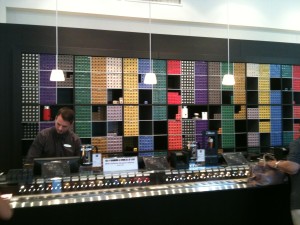
 Die längste Bank der Welt neben dem schönsten Kaffeeladen und oben die größten Kuhglocken über der Kaffeetasse und die schönsten Holzstapel…
Die längste Bank der Welt neben dem schönsten Kaffeeladen und oben die größten Kuhglocken über der Kaffeetasse und die schönsten Holzstapel…
_______________________________
(7/17/12)
DIM SUM IN BERLIN
 |
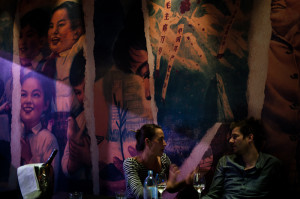 |
My answer to a sudden craving for Dim Sum in Kreuzberg SO36 is the LONG MARCH CANTEEN. Coming from San Francisco and used to the best I was surprised about the quality and variety in this stylish, dark Dim Sum place decorated with smiling faces from the Long March. The spot lights are on the food placed in front of you by charming Asian women –none of them Chinese, but that’s okay. My favorites: Shanghai dumplings ( bigger and spicier than what I know from Shanghai Dumpling King on Balboa St.) but very tasty, Octopus salad with turnips and for dessert traditional fried Bananas. The tab of about 30 Euros is many times that of Curry Wurst or Döner dinner…as expected in Kreuzberg. ——Guten Appetit.
Adresse: Wrangelstr. 20 —Photos by Didier Laget
_______________________________
(7/7/12)
Sommer vorm Balkon in Berlin, warm, black birds singing at 4.30 am and 8.30 pm, no wind, just balmy with thunderstorms interrupting the lazy heat of the day…and then suddenly everything can change into a cold summer day. It hasn’t happen to me yet, but it will come, I know the German weather. Although Berlin has “Sommerpause” there is a lot going on. Festivals of all kinds –fashion week is in full swing with Blue Jeans at center stage, everybody wearing them to everything, also Mayor Klaus Wowereit, only James Franco, promoting the jeans label 7 For All Mankind, doesn’t care what he is wearing.
I saw 3 films in 3 days. BARBARA by my favorite German director Christian Petzold, was the only German film shown on the plane coming over here. I was impressed that LH included a serious German movie that just premiered at the Berlinale in the flight entertainment program. When I walked up and down the isle, though, I didn’t see anybody watching it, besides me. A fine film, not his best, I think, but very good. Will try to see it again on big screen at Hackesche Höfe.
I just missed the SFS Youth Orchestra playing under Donato Cabrera at the Philharmonie and the reviews were fabulous. Der Tagesspiegel wrote about “fulminante Leistung…unter Donato Cabrera vom minimalistisch swingenden Shaker Loop von John Adams, der eine feine, homogene und doch immer wieder mit individuellen Farben hervortretende Streichergruppe zeigte, zu Solist Lars Vogt, der eine perfekte Einheit mit dem Orchester demonstrierte, ob in lyrischer Zurückhaltung oder explosiven Steigerungen…”
Will keep you posted about my summer in Berlin.
_______________________________
(6/17/12)
Lots of things happened since I posted last on German Gems. I saw a a couple of outstanding films at SFFS theatre on Post St. Bela Tarr’s supposedly last film THE TURIN HORSE which has nothing or very little to do with Nietzsche hugging a horse before he collapsed into madness. Shot in black & white and several hours long with not much happening, like most of Tarr’s films that I got sucked into, it does not quite make it to the top of my list, like SATANTANGO or WERCKMEISTER HARMONIES, but it is worth watching. The other film I saw at the same theatre ONCE UPON A TIME IN ANATOLIA was mesmerizing. Turkish director Nuri Bilge Ceylan won the Palm D’Or at Cannes 2011 for this masterpiece that for the first hour and a half is a road movie shot at night. Searching for a corpse, a handful of people – murderer, prosecutor, doctor, drivers, – drive around the country side to find the place where on a country road next to a tree the dead putatively was buried. All roads look alike especially at night. The intense search not just for the corpse but for the stories of the men involved in the investigation, goes on into day light when things finally clear up.
Last week I went to LA to attend an award ceremony for UCLA’s students where my daughter Milena was center piece with 2 awards for 2 of her films. A good start for a very competitive career in a city that otherwise should be avoided. Too many cars, insane… And here in SF don’t miss Frameline’s film festival going on for another week with a number of German entries. Check them out. http://ticketing.frameline.
_______________________________
(5/31/12)
Cannes 2012 – Milena’s frontrunners got top awards with Michael Haneke’s LOVE receiving the Palme d’Or. Can’t wait to see it and compare it to Andreas Dresen’s HALT AUF FREIER STECKE /STOPPED ON TRACK which won an award at Cannes in 2011 and tackles the same topic –dying–only Dresen’s character is 35 not 80. Also I heard that Haneke’s film has a nude scene of the eighty or so year old Emmanuelle Riva, a fabulous actress – remember HIROSHIMA MON AMOUR? – and even that has been addressed by Dresen’s CLOUD 9, which was shown in Cannes in 2009. It depicting nudity and sex between septuagenarians. Is Andreas Dresen always ahead? I will have to see the latest Haneke film to confirm. In the meantime we will wait patiently for the winners and losers – they might be good too.
_______________________________
(5/20/12)
The Cannes Film Festival started a few days ago. Still the most sought after festival by filmmakers and stars alike, it is known for screening the best of all genres – and where are the German entries? Under SPECIAL SCREENINGS I found the documentary MÜLL IM GARTEN EDEN (POLLUTING PARADISE) directed by Fatih AKIN and in SHORT FILMS GASP directed by Eicke BETTINGA. That’s it. If you browse through the program don’t forget to check out the Director’s Fortnight, a non-competitive sidebar not listed under Official Selection: http://www.quinzaine-
My spy at the festival is my daughter Milena, the cinematographer of THE BALLAD OF FINN + YETI, which will be shown in the short film competition of the Cinefondation. She was blown away by BEASTS OF THE SOUTHERN WILD , a Sundance 2012 favorite directed by Benh ZEITLIN. And Michael Haneke’s LOVE moved her to tears, very very sad, she said, another masterpiece.
_______________________________
(5/10/12)
Don’t miss Rothko and Richter. Berkeley Rep has a few more performances of RED, an award winning play by John Logan who says that the play is about fathers and sons and not about art. I disagree. It is about art, about painting, about Rothko and that’s why comparing it with GERHARD RICHTER PAINTING came to my mind. Two giant painters at work and talking about it. The Richter film at the Roxie will end today….
_______________________________
(5/7/12)
A recent article in the New Yorker (9 April) dealt with Karl May and the fascination of Germans with the Native Americans. Check it out. http://www.newyorker.com/reporting/2012/04/09/120409fa_fact_galchen And here a few more thoughts that came to my mind when I read the piece.
The fascination of Germans with Native Americans began long before Karl May entered the scene. When early German settlers came to the East Coast, many lived with Indian tribes, learned their languages, became translators and often part of the tribal families. The Roman historian Tacitus described the German tribes, like Germans would describe Indians, as uncorrupted, primitive, fierce and at one with nature, a people on the edge of a corrupt and voracious empire. Centuries later romantic writers like Novalis, Eichendorff. Brentano, Mörike, the painter Kasper David Friedrich and others dug deep into the primordial Germanness of man and nature and man’s longing for being one with nature in hostile surroundings. German Romanticism prepared the ground for Karl May’s success story.
In 1992 the Goethe-Institut in San Francisco presented a program of Germans and Native Americans with many distinguished tribal leaders present. They had visited some of the Indian Clubs in Germany and were impressed by the numbers, thousands of Germans masquerading every weekend as Indians from the North-American plains, and by the thoroughness that Germans seem to apply to whatever they do. “Driving on the Autobahn and seeing hundreds of teepees along the Rhine river, that was incerdible”, said Floyd Red Crow Westerman.
_______________________________
(4-26-12)
Fahim Abassi is the lucky winner of the Glawogger tickets. Gratulation!
The first week of the International Film Festival is over and I have to admit that I didn’t see much. DREILEBEN last Saturday was a bit of a disappointment. The first part by Christian Petzold, whose films I find fascinating, did have the usual ingredients of small town people looking for a way out, a murderer hiding in the dark woods, passion and mystery, but it did not add up to what Petzold has done in previous films, like JERICHO, YELLA or THE STATE I AM IN. The 2nd part of DREILEBEN was too convoluted, too much happening, too much talking. A beautiful old house, yes, with a voluptuous, very attractive woman living in it. And the 3rd part left too many questions open. For a crime story I need more answers that make sense.
SCHLAFKRANKHEIT, also by a director from the Berliner Schule, like Petzold and Hochhäusler, shows some of their trademarks of long shots, slow plot development, composed beautiful images. The film kept my attention and initiated lively talks afterwards.
Two documentaries – not German – are the best of what I have seen so far, AI WEI WEI: NEVER SORRY and WOMEN WITH COWS. Ai Wei Wei is a fascinating, charismatic character so courageous and so full of ideas that have been turned into his art projects. The film is just the beginning of a story that will need to continue. And the women devoted to cows are just out of this world. I grew up on a small farm with cows and could not of dreamt up anything like these characters living now and in Sweden. Go and see for yourself.
_______________________________
Thanks so much for sending in all the correct answers to the Richter question. The lucky winner is Anni. Gratuliere!
And here another pair of tickets to give away to a film of your choice by Austrian filmmaker Michael Glawogger at the PFA in Berkeley, May 4 -6. A retrospective of his documentaries and features will be shown there with the filmmaker present for Q&A. His films are very powerful stuff, especially MEGACITIES which has stayed with me since I saw it more than 10 years ago. More on http://bampfa.berkeley.edu/
And the question is: Which cities are portrayed in MEGACITIES? The first correct answer will win.
(4/25/12)
GERHARD RICHTER PAINTING at the Roxie in San Francisco, May 4 to 10
One of the world’s greatest living painter, German artist Gerhard Richter, has spent more than half a century experimenting with a wide range of techniques and ideas addressing everything from mass media representation and uncomfortable historical issues to intimate personal experiences. Media shy like his colleague Anselm Kiefer, Richter for the first time in many years agreed to appear on camera for this fascinating document which juxtaposes his creative process with personal comments and rare archival footage. He just turned eighty , so don’t miss this once in a lifetime portrait. More on http://www.roxie.com/events/
To win a pair of tickets for this show please answer the following question. The 2nd correct email to germangems@gmail.com is the winner.
Question: In which German town does Richter live today – Düsseldorf, Berlin, Köln or Dresden?
_______________________________
(4/18/12)
A big round of applause to all of you who sent in the answers to the DREILEBEN questions. All were correct, but only one winner, alas, whose email arrived yesterday at 14.29. Herzlichen Glückwunsch David.
Hope to see you all at the movies.
(4/17/12)
Thanks to all who sent in their answers to the SLEEPING SICKNESS question. The winners are Victor and Sylvia. Herzlichen Glückwunsch. And here the question for the trilogy DREILEBEN. The winner will get 1 set of 3 tickets for the 3 films screened on Saturday, April 21, starting at 1.30 pm at the Kabuki. True to form, the 3rd email with the correct answers to the three-part question will win.
Please name the 3 films of DREILEBEN (titles in German and English), the 3 filmmakers, and the English translation of Dreileben.
Viel Glück!
(4/15/12)
Here the question you have to answer for winning a pair of tickets to SLEEPING SICKNESS on Sunday April 22 at 6.30pm at the Kabuki. Will give away 2 pairs of tickets. Send your answer to germangems@gmail.com – first come first serve
What are the titles (in German and English) of Ulrich Koehler’s feature films (3)?
Good luck – and on Tuesday we will give away 1 set of tickets for DREILEBEN, a trilogy of German films also screened at SFIFF.
(4/13/12)
Win a pair of tickets for SLEEPING SICKNESS, shown at the SFIFF on Sunday April 22, 6.30 at the Kabuki. Check back here this coming Sunday, April 15 for the question you have to answer correctly in order to qualify.
And for the weekend I recommend ANY GIVEN DAY at the Magic Theatre. Bold, moving, disturbing, funny, just really good. No German is spoken in the play, but it could also happen in Germany on any given day.
(4/9/12)
San Francisco International Film Festival – April 19 to May 3, 2012
German Gems is pleased to co-present the latest film by Ulrich Koehler, recipient of the Best First Feature Award for BUNGALOW at Berlin& Beyond 2003
SCHLAFKRANKHEIT / SLEEPING SICKNESS
 |
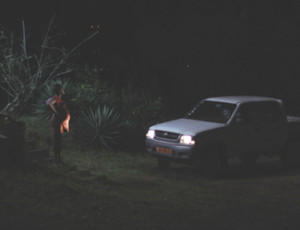 |
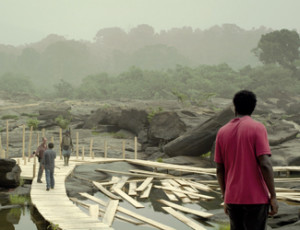 |
A German doctor working to fight a sleeping sickness epidemic in Cameroon must make difficult choices as he decides whether or not to return to Europe with his family. Ulrich Köhler’s award-winning film, a subtle and meditative examination of the social and psychological forces that intersect western aid to Africa, follows Dr. Ebbo Velten (Pierre Bokma) as he prepares to turn the medical program over to his replacement. Three years later, we see the consequences of Ebbo’s choice from the perspective of Alex Nzila (Jean-Christophe Folly), a young doctor who has come to evaluate the program. An African raised in France, Alex finds both African attitudes and Dr. Velten elusive and enigmatic. Köhler creates a palpable sense of dread and danger, stemming as much from the characters’ internal landscapes as from the corruption and military conflict that surround them. At times lushly beautiful as well as languorous and claustrophobic, the film’s echoes of Conrad’s Heart of Darkness suggest the degree to which colonial attitudes remain embedded in contemporary minds. For showtimes and tickets visit festival.sffs.org.. Link to: http://festival.sffs.org/
_______________________________
(3/30/12)
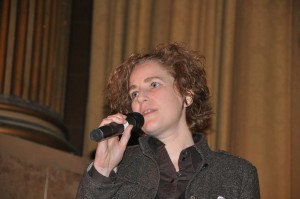

 |
Für den Frauenmonat März hier meine Erinnerungen an FRAUEN HINTER DER KAMERA
Von 1989 bis 2009 gehörte ich beim Goethe-Institut San Francisco zu den Frauen hinter der Kamera, die zwar keine Filme gemacht haben, aber zahlreiche Filmprogramme, oft mit der Kamera in der Hand, und sogar vor der Kamera zusammen mit Regisseurinnen wie Doris Dörrie, Monika Treut, Nina Grosse, Bettina Oberli oder Erica von Möller. Schon in den achziger Jahren waren Frauen im Filmprogramm des Goethe-Instituts sehr präsent. Ich erinnere mich an “ausverkaufte” Filmabende schon lange vor meinem Amtsantritt (damals zahlte man noch keinen Eintritt) mit Ulrike Ottinger, Helke Sanders und Helma Sanders-Brahms. Manfred Triesch veranstaltete legendäre Parties, wo ich u. a. Margarete von Trotta kennenlernte. Zu einer meiner ersten Filmveranstaltungen, die mir in Erinnerung geblieben ist, kam Ulrike Ottinger 1990 mit ihrem Film COUNTDOWN ins Goethe-Institut. Sie setzte sich lächelnd mitten in den anfangs noch vollen Saal. Ihr Lächeln verschwand aber, als immer mehr Leute den langen Film auf den harten Stühle nicht durchsitzen konnten und den Raum verließen. Der Countdown im Saal entfaltete sich als Gegenstück zum Countdown auf der Leinwand, der mit jubelnden Massen beim Fall der Mauer endete.
Die Filmtradition fortzusetzen und auszuweiten machte ich, als Programmfrau, zu meiner Hauptaufgabe, die sich bald zu einer wahren Leidenschaft entwickelte. 1996 wurde mit Hilfe von Institutsleiter Ulrich Sacker auf meine Anregung hin BERLIN & BEYOND ins Leben gerufen, ein einwöchiges Filmfestival, das endlich die vielen hervorragenden deutsch-sprachigen Filme auf großer Leinwand zeigen sollte, die sonst nirgens in San Francisco zu sehen waren. Mit dem Goethe-Institut als Veranstalter und dem wunderschönen Castro Kino als Partner boten sich ungeahnte Möglichkeiten und große Herausforderungen. Die 1500 Plätze im Castro auch nur zur Hälfte mit einem Publikum zu füllen, das weder die deutschen Schauspieler noch die Namen der Regisseure und schon gar nicht die der Regisseurinnen kannte, würde keine leichte Aufgabe sein. In den fünfzehn Jahren, die ich mit dem Festival zu tun hatte, wuchs B&B schließlich so an, daß das Kino manchmal ausverkauft, oft voll und meistens so gut besetzt war, daß die deutschen Gäste voller Staunen waren. Und natürlich gab es unter ihnen immer mehr Frauen, oft Absolventen deutscher Filmschulen, die aufgrund einer umfangreichen Filmförderungspolitik eine erfolgreiche Zukunft im Filmgeschäft versprachen.
Amerika habe ich als Quotenland kennengelernt. Ein Filmprogramm ohne Regisseurinnen zu veranstalten, war für mich als Leiterin des Festivals undenkbar, was sich nun, viele Jahre später beim Durchblättern der Berlin & Beyond Programme bestätigt. 1996, zum Eröffnungsfestival, stand MEIN LIEBER MANN von Eva-Maria Bahlrühs auf dem Programm und schon zwei Jahre später waren vier Regisseurinnen von insgesamt etwa zwanzig Filmemachern eingeladen. 2009 war der Anteil der Frauen auf weit über 30% gestiegen. Einige Namen tauchen immer wieder im Programm auf, wie Doris Dörrie, Barbara Albert (Österreich), Angela Schanelec und Caroline Link. Oft entpuppten sich aber kleine Filme von unbekannten Frauen als große Publikumserfolge, wie BIN ICH SCHÖN von Katinka Feistl, FRÄULEIN STINNES REIST UM DIE WELT von Erica von Möller oder Nathalie Steinbarts ENDSTATION TANKE und Birgit Möllers VALERIE, die beide mit $5000 und dem Best First Feature Award des Festivals ausgezeichnet wurden. In fünfzehn Jahren lernte das Publikum bei Berlin & Beyond über sechzig Filmemacherinnen kennen, deren Filme, bis auf wenige Ausnahmen, nicht in US Kinos gezeigt werden. Nur Carline Link, Doris Dörrie, Margarete von Trotta und Monika Treut, die Veteranen unter den Regisseurinnen, werden oft von US Verleihern gekauft. Gab es typisch weibliche Themen oder Sichtweisen? Gewalt, Kriegsverbrechen, die Brutalität der Neonazis waren selten ihr Fokus, vielmehr ging es um Beziehungsgeschichten, Frauenschiksale, historische, dramatische oder romatische Stoffe. Eine Ausnahme ist Brigitte Barteles Film NACHT VOR AUGEN, der auf viel subtilere Weise als Kathryn Bigelows THE HURT LOCKER das Kriegstrauma eines Soldaten beschreibt. Bigelow bekam 2010 als erste Regisseurin einen Oscar für ihren Film.
Publikumsliebling bei Berlin & Beyond war Doris Dörrie. Wenn sie in roten Turnschuhen, Stretchhosen und weißer Windjacke auf die Bühne sprang, jubelten die Zuschauer im vollgepackten Kino und gaben auch einem Film wie NAKED soviel Zuspruch, daß man nach zusätzlichen Beweggründen für soviel Begeisterung sucht. Der Titel half sicher und vielleicht auch ihre enge Verbindung zum Zen Center in San Francisco. Doris Dörrie und ihre Filme zogen auf jeden Fall genauso so wie Fatih Akin, Tom Tykwer, Wim Wenders oder Werner Herzog, die alle bei uns zu Gast waren.
Hollywood hat mit seiner mächtigen über hundert Jahre alten Filmindustrie kaum Regisseurinnen hervorgebracht und 2010 zum ersten Mal einer Frau den Oscar für “Best Director” gegeben. Deutschland dagegen hat aufgrund seiner besseren Finanzierungspolitik den Frauen im Filmgeschäft eine viel breitere Unterstützung ermöglicht, die auch Studentenfilmen Türen öffnen und Wege bahnen kann, die zwar selten zu den Oscars, aber oft bis nach San Francisco zu Berlin & Beyond geführt haben.
_______________________________
(3/20/12)
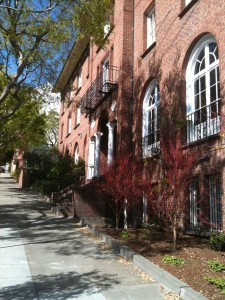 |
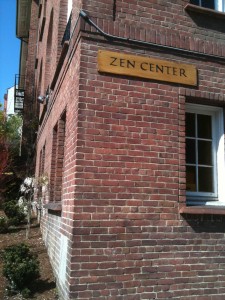 |
I had lunch at the Zen Center in San Francisco recently where I ran into so many German speaking people that I asked myself, is there a special relationship between Zen and Germans. What is it that attracts Germans and Swiss (I didn’t meet any Austrians) to Zen Buddhism? One of my former interns ended up at the Zen Center and part of the deal was that she could extend her stay in the US as a student of Zen. The other part was serious work from cleaning rooms, helping in the kitchen, gardening to practicing Zen from 4am to 8pm. A long hard day. My friend Bernd, trained as a modern dancer, has been a student of Zen since 1984 and spent most of those years at the Zen Center in SF. He will move back to Germany and open a center in Berlin this summer. Richard Baker, serving as the head of the ZC from 71 – 83, is now dividing his time between Colorado and in the Black Forest, Germany. I can think of many other Germans who go to ZC for practice sessions, spend a few months in Green Gulch, or, like me, just sit for an hour in the practice room, dimly lit by candles, to start the new year in peace and quiet. Sitting is difficult when you do it so rarely and at my age. The first 15 minutes I can only think of the pain in my legs, the next 15 minutes I try to think of nothing, the mantra of sitting, and in the final stretch I forget about everything and just sit. Stephanie Levy describes a workshop that she attended in Germany as follows:
“The Zen workshop was very interesting, very disciplined, and led by a Japanese Zen master from Tokyo. It was truly a new cultural experience for me. I never thought about how certain aspects of Japanese and German culture are so similar – the love of order, punctuality, hierarchy, perfection…”
Next time I will pay more attention to order and perfection at the ZC. I love their lunch menu which is always cooked to perfection. Check it out. http://www.sfzc.org/
_______________________________
(2/24/12)
Went to the Goethe-Institut last night for a book reading with Marica Bodrozic (sorry for the missing accents on the z and c) and Gregor Hens, young writers from Germany. The lounge where the reading took place had been renovated with bright colors, spotlights, a bar area, a bench with comfy pillows, all very inviting but only a handful of people showed up.
Gregor Jens read from NIKOTIN, part autobiography, part longing for the cigarettes that he had given up when he started writing the book. Why had he given up smoking, asked someone in the audience, since he had so many good things to say about it (at least in the opening chapter of the book that he read). Marica Bodrozic read from TITO IST TOT, a collection of stories from 1998, dealing with Yugoslavia, her homeland, and the death of the dictator. In beautiful German and a beautiful melodic diction that made you wonder if the story had been translated into German, she described her grandfather and a small village in which she had grown up. Unfortunately none of these books might be published in the US – NIKOTIN, a hard sell, because the pleasures of smoking is not what smoker or non smokers want to be reminded of, Marshall Tito, however, has become a person of enormous interest for writers and filmmakers. CINEMA KOMUNISTO (2011) is the latest documentary, I saw, about the dictator’s extravagant life style. Fascinated with celebrities and movie stars, like Richard Burton, who helped turn Tito’s own partisan battles into action thrillers, Tito was loved by many, especially his long time projectionist who showed him movies every night. So TITO IST TOT might eventually find a way to US bookstores. I hope so. And I can’t wait to read Marica’s other books, “das gedächtnis der libellen”, “Qittenstunden”, “Windsammler”, and more.
_______________________________
(2/18/12)
UND DIE BÄREN gehen an…
http://www.spiegel.de/kultur/
_______________________________
(2/17/12)
TRANSPLANTS OF HANDS AND FACE
Just read an article in the latest NEW YORKER about the first full face transplant in the US in 2010 after only a few partial transplants had been done in France and elsewhere. An amazing story about Dallas Wiens whose photos went around the world a couple of years ago. There is nothing German about the story. The head surgeon at the Brigham grew up in the Czech Republic, French surgeons did ground breaking work in transplantation of hands and face, no German hospital was mentioned, no German surgeon – but when they talked about the first hand transplant (in 1998 in France, first kidney transplant in 1954) and the dramatic twists and turns it involved, I thought of ORLACS HÄNDE, a silent masterpiece from 1924 by Robert Wiene that foreshadows all the psychological problems of a hand transplantation. Conrad Veidt, in one of his memorable performances, portrays Orlac, the pianist, who loses his hands in a train accident and got new ones from a murderer that turned Orlac into an evil person. So sobering to hear today’s surgeons say: There is the heart, liver, brain-and the face which is skin, tissue, muscle, and blood. And those who argued that the recipients would suffer an identity crisis were wrong. Our obsession with identity goes back a long way. Before The Hands of Orlac there was Freud and long before him the Brothers Grimm. One of their fairy tales tells about three Army Surgeons (Die drei Feldscherer) who not only cut off their own heart, eyes and arms and paste them back together with a miracle ointment, but have no problem transplanting organs of pigs and cats and the hands from a thief. The heart of the pig made the surgeon want to roll in the mud, with the cat’s eyes the second one could only see at night, and the hands of the thief turned the third one into a thief, of course.
Identity crisis after transplants today do not seem to be the biggest problem. Face-transplant recipients appear to adapt quickly, because they do not see their face constantly, says Dubernard, one of the experts. Hand transplants are much more psychologically straining, especially single hand transplants. New hands can not be easily ignored, and, unlike a double transplant, a single one makes you compare constantly. Dubernard now refuses to do single hand transplants. He would have saved Orlac.
Check out these articles
http://www.newyorker.com/reporting/2012/02/13/120213fa_fact_khatchadourian
http://www.kinoeye.org/02/04/goldberg04.php
http://www.grimmstories.com/de/grimm_maerchen/die_drei_feldscherer (in German)
_______________________________
(2/12/12)
CINEQUEST in San Jose, CA and THE TIN DRUM
Thank you, Tim Griesser, for pointing out the German films that will play at Cinequest 2012 (Feb 28-Mar 11). Here they are:
ABENDLAND
KAMPF DER KÖNIGINNEN / Battle of the Queen
DICKE MÄDCHEN / Heavy Girls
HOW I WAS STOLEN BY THE GERMANS
I saw KAMPF DER KÖNIGINNEN at last year’s Berlinale and yes, go and see it even if you don’t care about cows. I grew up on a farm and love cows, those big, warm, friendly, slow animals – remember the very long opening shot of Bela Tarr’s SATANTANGO with cows trodding through poop and mud forever? That was more like my farm life in the North German flat lands. BATTLE OF THE QUEENS is different. It’s Switzerland where in isolated valleys, surrounded by mighty mountains, cows are treated like majestic queens, pampered and groomed for the annual competition. It is not a bloody bull fight, no, as soon as one combatant turns away, the fight is over. As SF’s own Charlie Cockey puts it in his always elegantly written blurbs : “The contest is won by mere demurral… where even the losers are winners”. The film is preceded by another Swiss story, ICH BIN’S HELMUT, one of my favorite shorts that played at B&B 2010. A great program, check it out. http://www.cinequest.org/
_______________________________
(2/10/12)
BERLINALE 2012
If you are in Berlin right now check out the German films in the competition of the Berlinale. Three veteran filmmakers, known to San Francisco audiences from their films and visits to the Castro, present their latest works: Christian Petzold (JERICHO B&B 2009, YELLA B&B 2008, GESPENSTER/Ghosts B&B 2006, WOLFSBURG B&B 2004, just to name a few) is showing BARBARA, again starring his muse Nina Hoss, who again seems to be drifting through life — this time in East Germany in the summer of 1980. Hans-Christian Schmid’s (NACH FÜNF IM URWALD B&B 1997, LICHTER/Lights 2006, REQUIEM 2009, STURM/Storm 2009) WAS BLEIBT/Home for the Weekend, stars a.o. Lars Eidinger who played Georg Trakl in TABOO, this year’s closing night film of German Gems. The story: a family reunion in a small town outside of Berlin which ends with things falling apart. Has been done before but Christian Schmid will add new touches, I’m sure. And Matthias Glasner known for not shying away from uncomfortable topics (SEXY SADIE B&B 1997’s Opening Night film, DER FREIE WILLE/ The Free Will B&B 2007) presents GNADE/Mercy with his favorite actor, Jürgen Vogel. The story takes place high up in Norway, in winter, of course, where in a shadowy nocturnal world a melodrama unfolds. For more go to The Berlin Film Festival
and here a fantastic review (in German) of BARBARA in Spiegel Online.
Barbara review
Wish I were there…
_______________________________



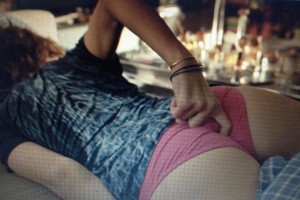
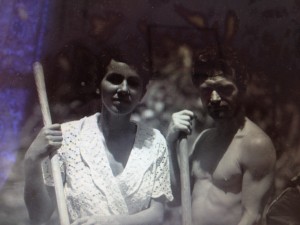
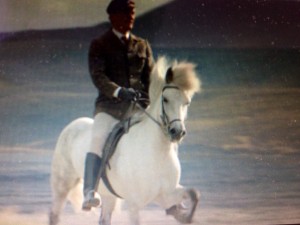
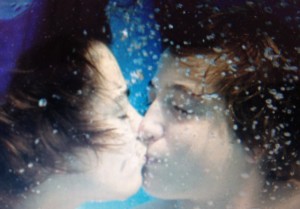



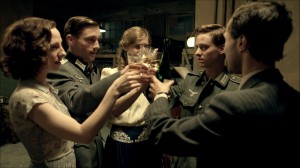
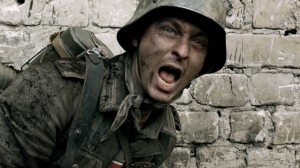
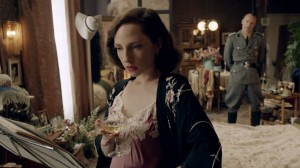
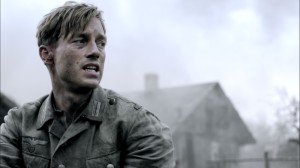



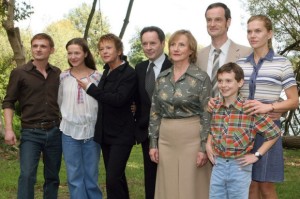
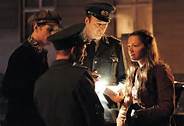
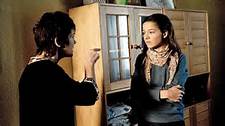

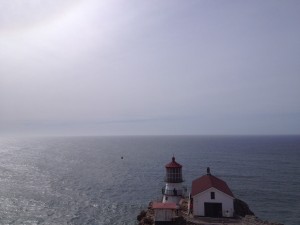
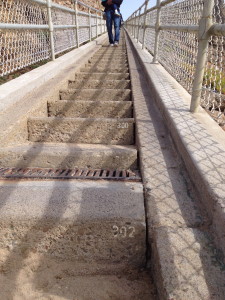
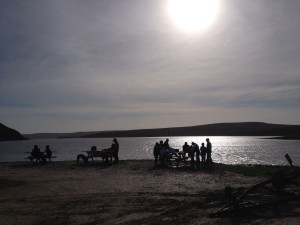
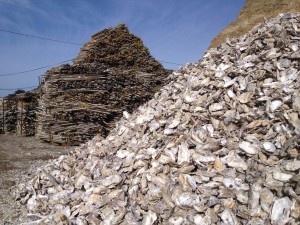

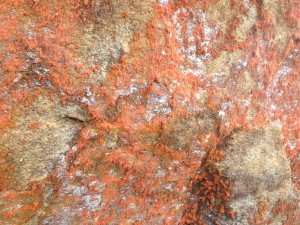 It
It








